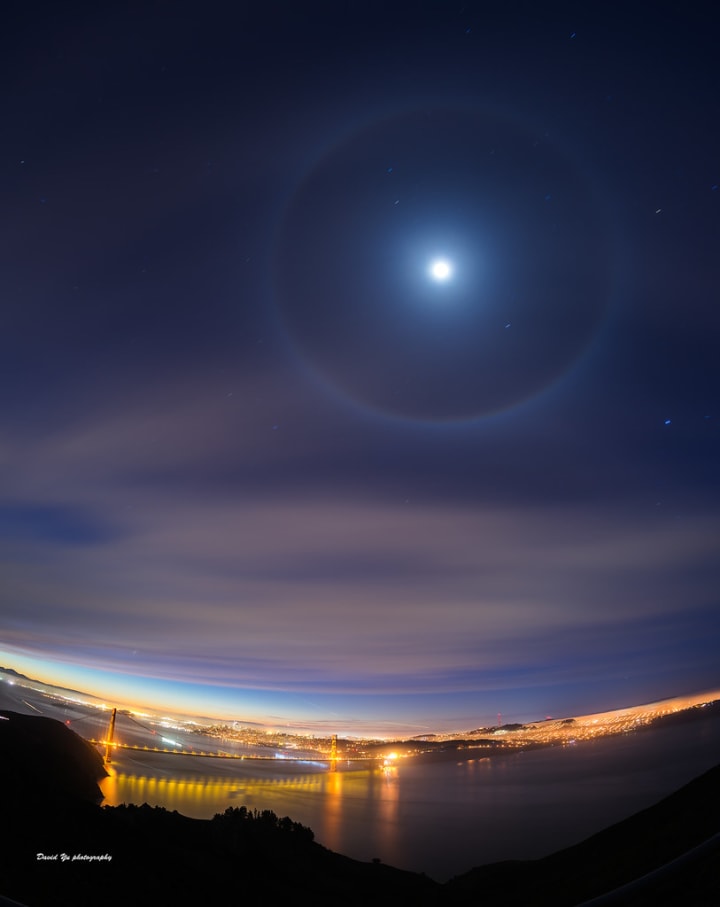What is a Moonbow?
Rainbows are great; but have you ever seen a Moonbow? If you're like me and never heard of one before, strap in. They're pretty great.

The world is fantastic. A couple of days ago, we wrote a blog exploring the topic of rainbows and how Hawaii is one of the best places on earth to see them. Since then, we have not stopped thinking about them. As the UK is roughly 80% rain, we do see a rainbow here and there. This sparked my natural curiosity and led me to research further into the world of rain, light, and colour – then, I stumbled onto the topic of moonbows.
Moonbows

Moonbows, also known as lunar rainbows, arise at night! However, before we go into what a moonbow is, we should go through the basics of daylight rainbows. Rainbows form when sunlight passes through airborne water droplets. The sun emits white light, which is a mixture of all seven colours. Water droplets operate like glass prisms, bending light as it passes through them and separating white into its constituent colours, resulting in a rainbow. Water in the air could result from recent rainfall or mist from nearby waterfalls, for example. However, to create a rainbow, the sunlight must strike the raindrops at a 42-degree angle for red light and a 40-degree angle for violet light. And double rainbows are merely light refracting through raindrops twice.
Moonbows have a lot in common with rainbows; however, instead of direct sunlight refracting through raindrops, moonlight refracts through the water droplets in the air. The moon simply reflects distant sunlight and does not emit any light of its own; thus, it is technically still sunlight. Because the moon is brighter and gives off more light to refract, the optimum time to witness a moonbow is around the time of a full moon. Aside from the noticeable difference in time of day, moonbows also have a distinct appearance. While rainbows in the daylight are vibrant, the moon isn't as brilliant as the sun, so there's less light refracted through the water droplets at night.
Once I was done with moonbows, you know I had to look further. Here are a couple of other forms of rainbows that I found on my scouting mission. (I have too much time on my hand…)
Monochrome Rainbow

A monochrome rainbow is one in which the colour spectrum is only one colour, usually red. A monochromatic rainbow, sometimes known as a red rainbow, is a rare meteorological event that occurs only when sunlight travels the farthest through the earth's atmosphere, such as at sunrise or sunset.
Fogbow

A fogbow is similar to a traditional rainbow. It forms when sunlight interacts with water droplets contained in fog, mist, or cloud rather than raindrops as it occurs in a classic rainbow. Water droplets are much tiny than raindrops, measuring less than 0.1 mm in diameter virtually all the time. Because of these tiny droplets, light undergoes various physical processes, the most notable of which is diffraction; fogbows appear to be colourless. Fogbows are frequently referred to as white rainbows because of this. Fogbows are commonly seen in conjunction with a 'glory,' which is also created by diffraction. As seen in the figure below, glory is a series of numerous pale-coloured rings at the bow's centre.
Full Circle Rainbow

All rainbows are expected to form a complete circle in the appropriate conditions, rather than the semi-circular shape that is commonly seen. However, due to various factors such as the sun's position in the sky or the landscape's barrier of the sun, it is impossible to see a rainbow in its entirety. Moving to high elevations, such as the top of a large structure or onboard an aeroplane, removes these limits, allowing a full-circle rainbow to be seen.
I think that I have covered the rainbow sector well, so I think it's time to find something new to obsess about. Ever since I began to ask myself more question on the simplest of topics, I have learnt so much that previously I would have ignored. The world works in magnificent ways, so look through it with a magnifying glass; you'll be shocked what you find.
Thank you for taking the time to read our blog! If you enjoyed the content or learnt something along the way, please consider leaving a '<3' below! We would appreciate it if you could leave a small tip to support us in our mission to provide free, weekly infotainment for you to enjoy!
If you wish to begin your Vocal journey, join the Vocal+ programme to get more for your work! Earn more per view, withdraw your profits quicker, and gain access to Vocal+ Challenges with prizes to be won every week!
Use the link below and begin your Blogging career today!
https://vocal.media/vocal-plus?via=dawid
You're the reason we can continue doing what we love and making all of this possible. We are forever grateful for your support!
About the Creator
People! Just say Something!
Quirky Writing created by Artistic Creativity and the power of AI with the goal of learning something new every day!
Facebook: https://www.facebook.com/PeopleJSS
Twitter: https://twitter.com/PeopleJSS






Comments
There are no comments for this story
Be the first to respond and start the conversation.